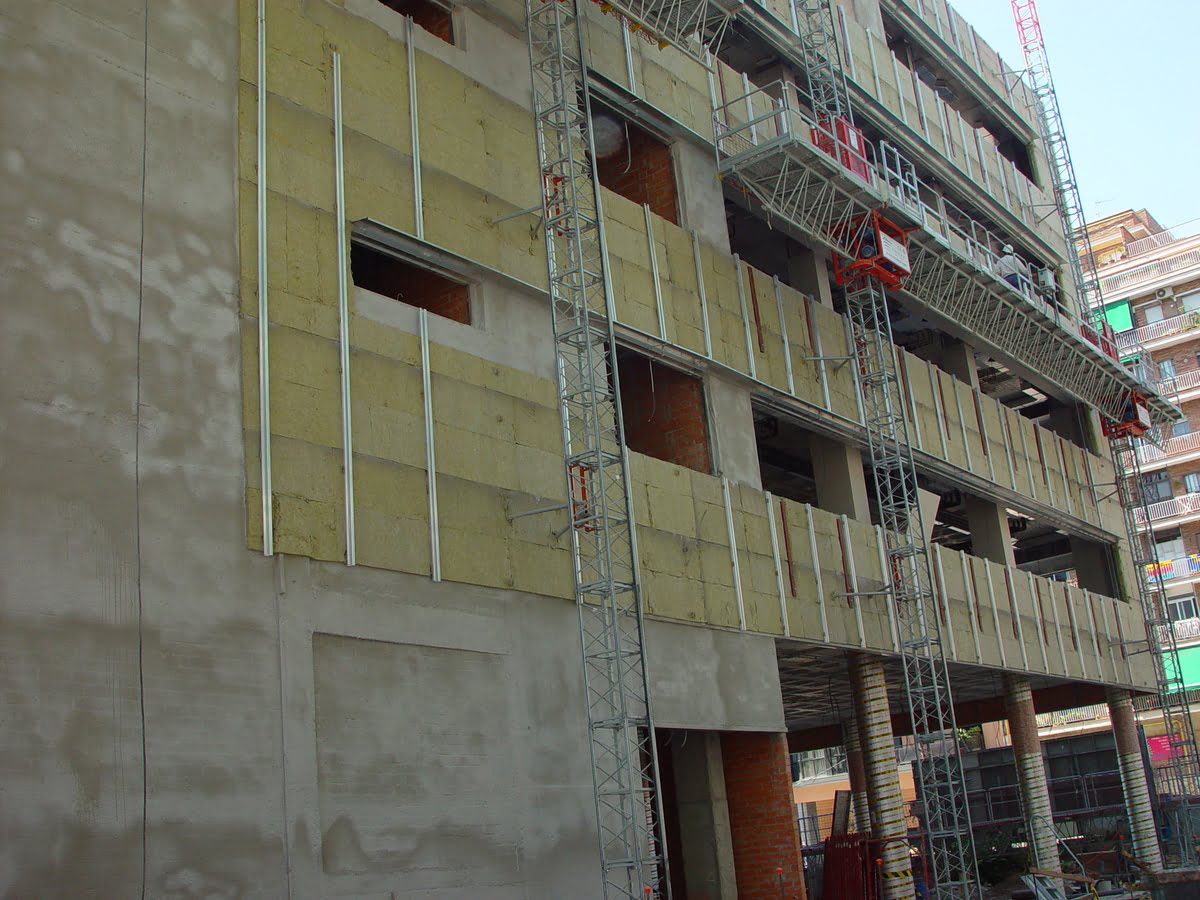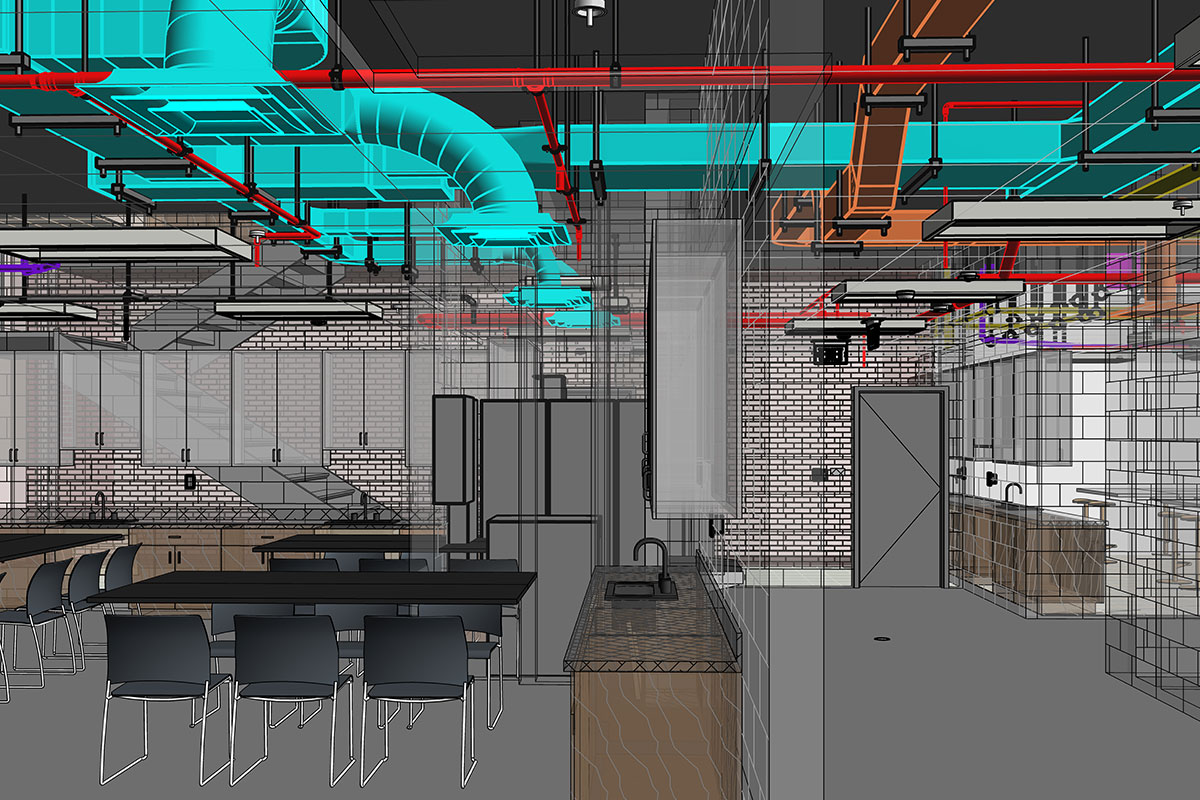Home>diy>Building & Construction>What Does “Allowance” Mean In A Construction Contract


Building & Construction
What Does “Allowance” Mean In A Construction Contract
Modified: January 4, 2024
Learn what the term "allowance" means in a building construction contract and how it impacts your project.
(Many of the links in this article redirect to a specific reviewed product. Your purchase of these products through affiliate links helps to generate commission for Storables.com, at no extra cost. Learn more)
Introduction
In the world of construction, contracts play a pivotal role in ensuring that projects are executed smoothly and according to plan. A construction contract outlines the rights, responsibilities, and obligations of all parties involved, providing the framework for a successful project. One important aspect of a construction contract is the inclusion of allowances, which can significantly impact the project’s outcome.
Allowances refer to specific amounts of money set aside in the contract for various components of the project that are yet to be determined or finalized. These components include materials, labor, equipment, and other contingencies. The purpose of allowances is to provide flexibility in the budget and allow for adjustments as the project progresses.
In this article, we will delve into the meaning of “allowance” in a construction contract and explore the different types of allowances commonly included. We will also discuss the purpose of including allowances, how they are determined and calculated, potential issues, and the benefits and drawbacks of including allowances in a construction contract.
Key Takeaways:
- Including allowances in a construction contract provides flexibility, empowers clients to make decisions, and manages uncertainties, contributing to a smoother project experience and personalized outcomes.
- While allowances offer benefits such as risk management and adaptability, accurate estimation, effective change order administration, and proper budget control are crucial to mitigate potential drawbacks and ensure project success.
Read more: What Is An Allowance In Construction
Definition of “Allowance” in a Construction Contract
When it comes to construction contracts, the term “allowance” refers to a specified amount of money allocated for certain aspects of the project that are not yet fully defined or subject to change. Allowances are essentially placeholders within the contract, providing flexibility for the project’s budget and allowing for adjustments as more information becomes available.
An allowance is typically included in a construction contract when the exact details or costs of a specific component are yet to be determined. It allows the project to move forward without finalizing every detail upfront, which can save time and prevent delays. For example, the specific selection of materials or finishes for certain areas may not be known at the beginning of the project. In such cases, an allowance is set aside to cover the cost of these items.
Allowances are a common practice in construction contracts, as they provide a mechanism to account for uncertainties and prevent the need for constant revisions to the contract. They are particularly useful in situations where the client wants flexibility in making decisions or where unexpected issues may arise during the course of the project.
It is important to note that allowances are not unlimited funds. Instead, they have an agreed-upon set amount that can be used for the specific purpose mentioned in the contract. Once the actual costs for that component are determined, the allowance is adjusted accordingly. This adjustment is often made through a change order, which is a written amendment to the contract that reflects the revised cost or scope of work.
Overall, the inclusion of allowances in a construction contract provides a mechanism to account for unknowns, provide flexibility, and allow for adjustments as the project progresses. It helps to ensure that the project can move forward smoothly while accommodating changes and unforeseen circumstances that may arise along the way.
Types of Allowances in a Construction Contract
Allowances in a construction contract can vary depending on the specific needs and requirements of the project. Here are some common types of allowances that are typically included:
1. Materials Allowance
A materials allowance is set aside in the contract to cover the cost of materials that have not been finalized or specified at the time of signing the contract. This could include items such as flooring, cabinetry, fixtures, or other finish materials. The allowance provides flexibility for the client to make selections during the project while ensuring that funds are allocated for those materials.
2. Labor Allowance
A labor allowance is included in the contract to cover the cost of labor for certain aspects of the project that are yet to be determined. This could include specialized work, subcontractors, or additional labor required for unforeseen circumstances. The labor allowance ensures that there are funds available to account for these expenses without disrupting the project’s progress.
Read more: What Is A Construction Contract
3. Equipment Allowance
An equipment allowance is allocated in the contract to cover the cost of renting, leasing, or purchasing specific equipment or machinery that may be required during the construction process. This could include heavy machinery, tools, or specialized equipment needed to complete certain tasks. The allowance ensures that the necessary equipment can be acquired without impacting the project’s budget.
4. Contingency Allowance
A contingency allowance is a buffer set aside in the contract to account for unforeseen circumstances or potential changes that may arise during the project. This allowance is meant to cover unexpected expenses or modifications that were not initially planned for. It provides a safety net to address any surprises that may impact the project’s timeline or budget.
These are just a few examples of the types of allowances that can be included in a construction contract. Depending on the nature and complexity of the project, other specific allowances may also be necessary to cater to unique requirements. The purpose of these allowances is to provide flexibility, manage uncertainties, and ensure that the project can progress smoothly despite unknowns or potential changes.
Purpose of Including Allowances in a Construction Contract
The inclusion of allowances in a construction contract serves several important purposes. These allowances provide flexibility, manage uncertainties, and ensure that the project can progress smoothly. Here are some key purposes of including allowances:
1. Flexibility in Decision-Making
Allowances allow clients to make decisions regarding specific components of the project as it progresses. By setting aside funds for allowances, clients have the freedom to choose materials, finishes, or equipment options that best align with their preferences and budget. This flexibility helps to accommodate changes and adapt to evolving needs without disrupting the project’s timeline.
2. Managing Unknowns
Construction projects often involve uncertainties, such as material availability, labor productivity, or design changes. Allowances help to manage these unknowns by allocating a certain amount of funds to account for such variables. This ensures that there are resources available to address unforeseen circumstances and prevent delays or budget overruns.
3. Adapting to Change
As a construction project progresses, it is not uncommon for changes to occur. These changes may arise from client preferences, design modifications, or unforeseen site conditions. Allowances provide a mechanism to accommodate these changes by allowing for adjustments to the budget and scope of work. This flexibility ensures that the project can adapt to evolving needs and accommodate any necessary revisions.
4. Budget Control
Allowances help to control the project’s budget by setting aside predetermined amounts for specific components. This allows for better control and tracking of expenses, ensuring that funds are allocated appropriately. It also helps to prevent unexpected cost overruns by providing a clear framework for budget management and expenditure.
5. Risk Mitigation
Including allowances in a construction contract helps to mitigate risks associated with uncertainties and unforeseen circumstances. By allocating funds for potential contingencies, the project is better prepared to handle unexpected challenges. This proactive approach minimizes disruptions and helps to keep the project on track.
By including allowances in a construction contract, all parties involved can have confidence in the project’s ability to adapt to changes, manage unexpected situations, and maintain control over the budget. These allowances serve as a safeguard to ensure that the project proceeds smoothly, while allowing for flexibility and adjustments as needed.
How Allowances are Determined and Calculated
The determination and calculation of allowances in a construction contract involve careful consideration of various factors, including the nature of the project, client preferences, and estimated costs. Here are the key steps involved in determining and calculating allowances:
1. Project Evaluation
Before determining the allowances, a thorough evaluation of the project is conducted. This evaluation includes an assessment of the scope of work, architectural plans, and specifications. It helps to identify areas where allowances may be necessary, such as materials, labor, equipment, or unforeseen contingencies.
2. Research and Analysis
Once the areas requiring allowances are identified, research and analysis take place to gather information and estimate the potential costs involved. This may involve consulting suppliers, contractors, or industry experts to determine average prices for materials, labor rates, or equipment rental costs. This information serves as a basis for calculating the allowances.
3. Budget Allocation
Based on the research and analysis, the determined cost estimates are allocated as allowances within the overall project budget. The amount allocated for each allowance is typically agreed upon by both the client and the contractor, considering the scope of work, available funds, and the level of uncertainty surrounding the specific component.
4. Documentation and Specifications
Allowances in a construction contract are documented in a clear and specific manner. The contract should clearly state the purpose of the allowance, the amount allocated, and any specific requirements or limitations associated with it. Detailed specifications and descriptions are included to provide a framework for decision-making when finalizing the allowance components.
5. Adjustments through Change Orders
As the project progresses and more information becomes available, adjustments may be necessary to the allowances. This is typically done through a change order, which is a written amendment to the contract reflecting the revised cost or scope of work. Change orders help to ensure that the allowances accurately reflect the actual costs as they are finalized.
The determination and calculation of allowances in a construction contract require a collaborative effort between the client, contractor, and other stakeholders. It involves careful research, estimation, and documentation to accurately account for potential costs and uncertainties throughout the project’s duration.
Potential Issues and Considerations with Allowances in a Construction Contract
While allowances serve a crucial role in managing uncertainties and providing flexibility in a construction contract, there are potential issues and considerations that need to be taken into account. It is important to address these factors to ensure a smooth and successful project. Here are some common challenges and considerations with allowances:
1. Accuracy and Estimation
One potential issue with allowances is accurately estimating the costs associated with the specific components. Estimation errors can result in underestimation or overestimation of the allowances, which can lead to budgetary issues and delays. It is crucial to conduct thorough research and analysis to ensure that the estimated allowances align with the actual costs that will be incurred.
Read more: What Does Masonry Construction Mean
2. Change Orders and Adjustments
As the project progresses, it is not uncommon for changes to occur that affect the allowances. Changes may arise from client preferences, design modifications, or unforeseen circumstances. It is important to establish clear procedures for reviewing and approving change orders related to the allowances. This helps to maintain proper documentation and communication, ensuring that any adjustments to the allowances are appropriately authorized and executed.
3. Communication and Documentation
Effective communication and documentation are crucial when dealing with allowances in a construction contract. Clear and open communication between the client and the contractor helps to ensure that both parties have a clear understanding of the allowances and any changes that may occur. Detailed documentation of the allowances, including specifications, limitations, and potential contingencies, is essential to avoid misunderstandings and disputes down the line.
4. Pre-Construction Planning
Thorough pre-construction planning is vital to accurately determine the allowances. It is important to foresee potential issues and establish appropriate allowances for various components. Engaging with vendors, suppliers, and subcontractors early on helps to gather accurate pricing and input regarding the materials, labor, and equipment allowances. This proactive approach minimizes the chances of unexpected cost overruns or delays.
5. Cost Control and Contingency Planning
While allowances provide flexibility, it is essential to exercise proper cost control and contingency planning. Monitoring expenses, comparing actual costs to the allowances, and keeping track of any changes through change orders are crucial to ensure that the project remains within the agreed-upon budget. Allocating a contingency allowance can also help to mitigate risks and address unforeseen circumstances without disrupting the project’s progress.
By considering and addressing these potential issues and considerations, stakeholders can ensure that allowances in a construction contract are effectively managed. Accurate estimation, clear communication, proper documentation, and proactive planning are key to navigating these challenges and ensuring a successful outcome for the project.
Read more: What Does ISO Mean In Construction
Benefits and Drawbacks of Including Allowances in a Construction Contract
Including allowances in a construction contract offers several benefits, but it is important to consider the drawbacks as well. Understanding both sides of the equation is crucial for effective decision-making. Here are the key benefits and drawbacks of including allowances in a construction contract:
Benefits:
1. Flexibility and Adaptability:
Allowances provide flexibility, allowing for changes and adjustments during the course of the project. They enable clients to make decisions as the project progresses, accommodating evolving needs and preferences. This flexibility ensures that the project can adapt to changes without negatively impacting the timeline or budget.
2. Risk Management:
By allocating allowances for potential contingencies, the project is better equipped to handle unforeseen circumstances or changes that may arise. This proactive approach minimizes disruptions and mitigates risks, ensuring that the project can proceed smoothly even in the face of uncertainty.
3. Decision-making Empowerment:
Allowances give clients more control and decision-making power over certain aspects of the project. Clients can choose materials, finishes, or equipment options that best align with their preferences and budget. This empowerment fosters a sense of ownership and satisfaction for the client, resulting in a more personalized end result.
Drawbacks:
1. Cost Uncertainty:
Allowances introduce a level of uncertainty regarding the actual costs that will be incurred. Estimating costs accurately can be challenging, and there is always a possibility of overestimating or underestimating the allowances. This uncertainty can lead to budgetary issues and potential disputes if the actual costs differ significantly from the allowances.
2. Change Order Administration:
Adjusting allowances through change orders can add administrative complexity to the project. Change orders often require extensive documentation, communication, and approvals. Failure to handle change orders effectively can lead to delays, disputes, and additional costs. Proper communication and documentation are crucial to manage change orders associated with the allowances efficiently.
3. Potential Budget Overruns:
If allowances are not managed properly, there is a risk of budget overruns. Clients may exceed the allocated allowances, resulting in additional costs that were not accounted for. Contractors need to closely monitor expenses and communicate any potential deviations to the client to ensure that allowances are not exceeded without proper authorization.
It is important to carefully consider the benefits and drawbacks of including allowances in a construction contract before making a decision. By weighing these factors and implementing effective controls and communication, stakeholders can navigate the challenges and leverage the benefits of allowances to ensure a successful and satisfactory project outcome.
Conclusion
Including allowances in a construction contract plays a vital role in managing uncertainties, providing flexibility, and ensuring the successful execution of a project. Allowances allow for adjustments, adaptability, and decision-making empowerment throughout the construction process. However, it is essential to carefully consider and address potential issues, such as accuracy in estimation, change order administration, communication, and budget control.
The flexibility offered by allowances allows clients to make decisions as the project progresses, accommodating changes and evolving needs. It empowers clients to personalize their project and align it with their preferences and budget. Moreover, the proactive approach of including allowances helps manage risk and address unforeseen circumstances, reducing disruptions and ensuring a smoother project experience.
However, potential drawbacks, such as cost uncertainty and potential budget overruns, should not be overlooked. Accurate estimation, effective change order administration, and proper budget control and contingency planning are essential to mitigate these challenges. Clear communication and documentation throughout the project help prevent misunderstandings and disputes, ensuring that all parties are aligned and informed.
In conclusion, including allowances in a construction contract offers significant benefits, such as flexibility, risk management, and decision-making empowerment. Moreover, by addressing the potential issues and implementing effective controls, stakeholders can maximize the advantages of allowances while minimizing the drawbacks. The careful consideration and management of allowances contribute to a successful and satisfactory construction project for all parties involved.
Frequently Asked Questions about What Does "Allowance" Mean In A Construction Contract
Was this page helpful?
At Storables.com, we guarantee accurate and reliable information. Our content, validated by Expert Board Contributors, is crafted following stringent Editorial Policies. We're committed to providing you with well-researched, expert-backed insights for all your informational needs.










0 thoughts on “What Does “Allowance” Mean In A Construction Contract”